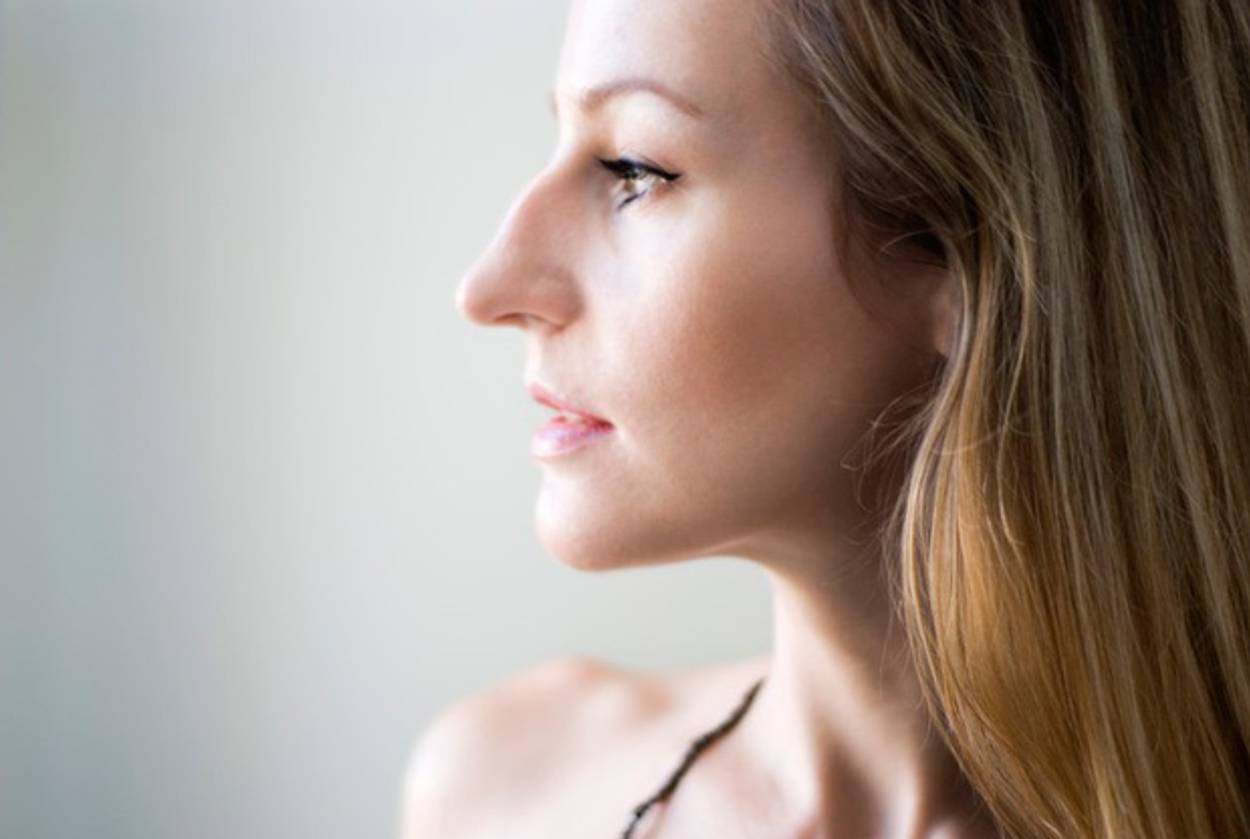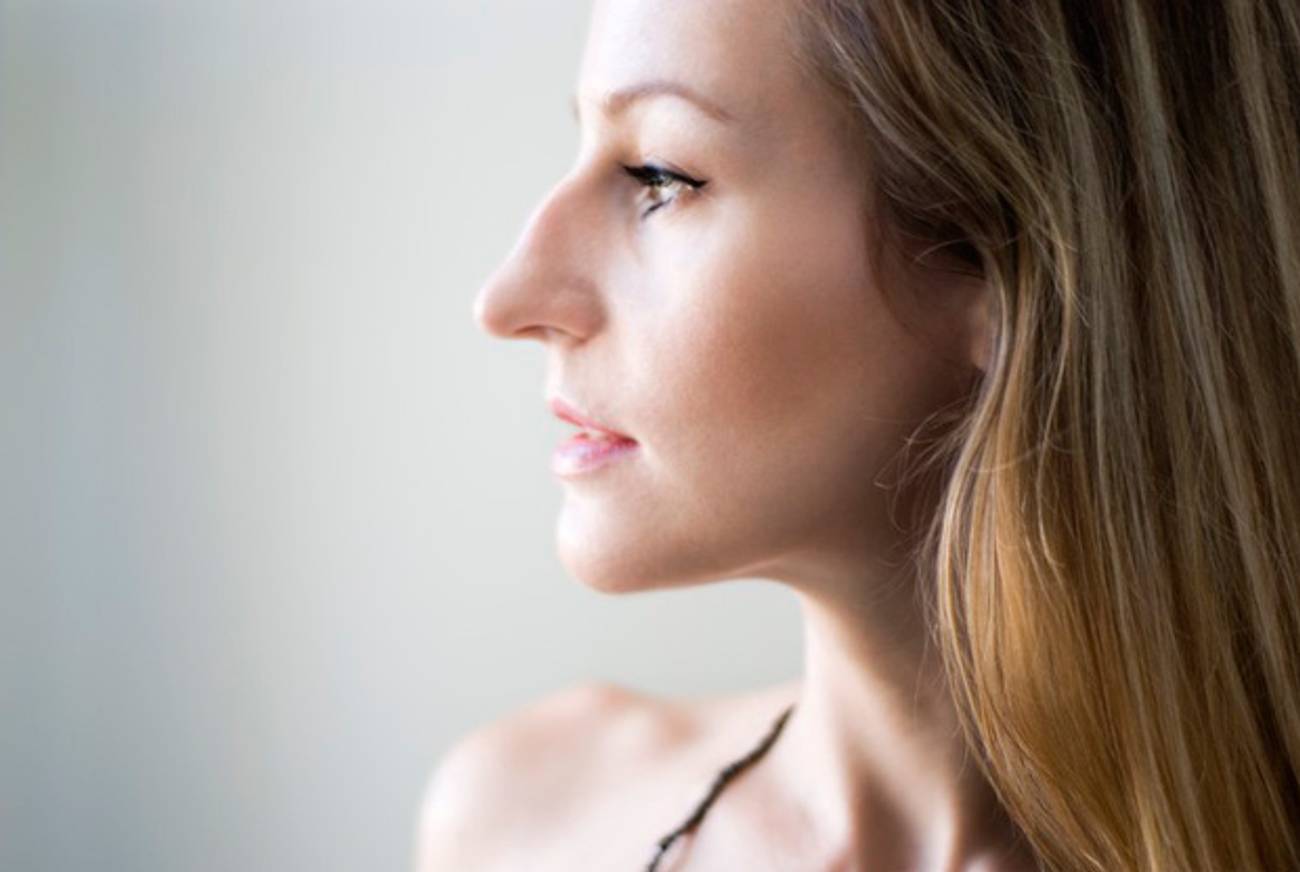A Nose Dive for Nose Jobs
As standards of beauty shift, rhinoplasty—once a rite of passage for Jewish teens—declines in popularity




For generations, Jewish girls from well-off families underwent a special rite of passage, one that fell somewhere between their bat mitzvahs and their weddings: their nose jobs. But according to a set of recent statistics, that may be changing: Far fewer nose jobs are being performed than just a decade ago—in what may reflect shifting standards of beauty and perhaps even Jews’ diminishing dissatisfaction with what they see in the mirror.
In 2011, according to the American Society of Plastic Surgeons, 37 percent fewer Americans got nose jobs than in 2000. The economy surely played some role: Surgical cosmetic procedures across the board declined by 17 percent during that period, coinciding with the economic downturn, which left people with less money to spend on nonessential surgery. But rhinoplasty, or “nose reshaping,” saw one of the sharpest drops among all procedures, from 389,000 in 2000 to 244,000 in 2011.
The plastic surgeons’ group doesn’t keep tabs on the religion of patients undergoing cosmetic surgery, although it does collect some data about certain minority groups. For instance, plastic surgery in general has been gaining in popularity among Hispanics, growing 8 percent from 2010 to 2011, and rhinoplasty in particular has been gaining ground among Asian Americans—it’s now the most common cosmetic surgical procedure in that demographic group. If the total number of nose jobs in America is rapidly declining, while their popularity rises among certain non-Jewish groups, one likely conclusion is that rhinoplasty is declining among Jews.
“There are other groups kind of taking the place of what Jews did a generation ago or two generations ago,” said Ira Papel, a facial plastic surgeon in Baltimore.
Indeed, anecdotal evidence seems to confirm that nose jobs are not the status symbol they once were among Jews. “It was like a rite of passage, and it’s not that anymore,” said Babak Azizzadeh, a plastic surgeon in Beverly Hills, who says he no longer sees Jewish parents pushing their teenage children to get rhinoplasty the way they used to.
“It seems likely that the number of Jewish nose jobs has gone down,” said Emory University physician and anthropologist Melvin Konner, author of The Jewish Body. “It’s fair to say that this was once a lot more routine for Jewish girls than it is now.”
Konner goes on to suggest a reason behind the changing attitude toward nose jobs: “I think it’s because of increased ethnic pride and a decreased desire to stop looking Jewish and blend in,” he said, “which is why rhinoplasty was invented.”
***
By the 1920s, surgeons recognized “that Jews and other ethnic Americans represented a large potential market for nasal plastic surgery and were making a move to claim it,” historian Beth Haiken wrote in her 1998 book Venus Envy: A History of Cosmetic Surgery. In 1936, Haiken wrote, pioneering plastic surgeon Vilray Blair, chief of that specialty at Washington University in St. Louis, noted that “change in the shape of the pronounced Jewish nose may be sought for either social or business reasons.”
“It was Jews, but it was also Italians and Greeks,” who sought to change the shape of their noses, Haiken told me. “There was a lot of anti-immigration sentiment and a lot of anti-Semitism once the immigration laws changed.”
Few patients have ever walked into a plastic surgeon’s office and said explicitly that they wanted to look less Jewish or Italian or Greek, though, Haiken said: “They say, ‘I want to look pretty.’ ”
In 2001, Beth Preminger, a Cornell medical student who’s now a plastic surgeon in New York, wrote in the Journal of the American Medical Association that “both in the past and in the present day, cosmetic surgeons have been sought by patients wishing to alter features thought to separate them from the mainstream.”
These days, though, the so-called mainstream is becoming less and less mainstream. New 2011 Census data show that for the first time last year, a majority of U.S. children under a year old were members of racial or ethnic minorities.
“The WASPs are becoming a minority,” said filmmaker Gail Kirschenbaum—and that means that old standards of beauty are changing. “It’s not about trying to have the WASPy nose anymore. What is acceptable and considered beautiful is different now.”
Kirschenbaum made the 2007 short film My Nose about her mother schlepping her to plastic surgeons when she was 15 to talk about getting a nose job, which Kirschenbaum resisted. When she was growing up in New York the ‘60s and ‘70s, she says, high-school and college yearbooks were like collections of before-and-after photos for nose jobs—but not anymore. (My own daughter is 15 now, growing up in generally affluent Bethesda, Md., but I’ve never heard her, or any of her Jewish high-school-aged friends, talk about nose jobs.)
Haiken agrees with Kirschenbaum’s observations about what’s considered beautiful these days. When Haiken was working on Venus Envy, she perused women’s magazines from the ‘30s, ‘40s, and ‘50s; comparing them to women’s magazines today, she noted a definite increase in the diversity of women’s images: “You see Asian models, you see African-American models. You never used to at all.” However, Haiken pointed out, as far as fashion models go, “you don’t see a lot of hooked noses, thick lower lips—the kind of features that are caricatures for Jews.”
In Beverly Hills, Azizzadeh, the plastic surgeon, says that young Jews “are waiting a longer period of time” to get nose jobs, “and some may elect not to do it.” (Azizzadeh, a Persian Jew who attended Beverly Hills High, which he calls “the mecca of rhinoplasty,” did undergo the procedure himself—although the 41-year-old put it off until after he broke his nose at age 24.)
And when Azizzadeh does perform nose jobs, he finds that patients’ reasons for undergoing the operation have changed in a significant way: More than half of the nose jobs he performs are revisions to restore more character, more ethnicity, if you will. Patients no longer come in asking for the cookie-cutter scooped bridge and upturned nose that plastic surgeons were churning out in the ‘70s, ‘80s, and ‘90s, he says.
“The ideal beauty can be anybody,” Azizzadeh said. “I think people actually don’t want to assimilate as much.” On his practice’s website, he specifically talks about how Jewish patients are often concerned with “keeping their ethnic identity intact.”
But they still want to look pretty, says Miami plastic surgeon Michael Salzhauer, an Orthodox Jew who garnered media attention this spring for his efforts to market rhinoplasty to Jews. He’s not out to make them look less Jewish, says Salzhauer, 40, who got a nose job and chin implant at 30, by then married with children: “It’s mainly about self-esteem. Self-confidence is the most attractive trait a person can have.”
Salzhauer produced a music video called “Jewcan Sam”—a reference to Froot Loops cereal’s large-beaked Toucan Sam. The young man is played by Doug Staiman, lead singer of the Groggers, a self-described “Jewish pop, punk band with a comic twist” based in New York. In the video, the band sings: “She says, ‘You’ve got a beak like Jewcan Sam. I only go with guys with perfect upturned noses … I will love you till forever if you get your nose circumcised.’ ” Staiman’s character does get the operation—although he still doesn’t get the girl, because she then tells him that she only dates football players.
In exchange for making the video, Salzhauer offered rhinoplasty to all four Groggers, all men, but only Staiman took him up on it.
Salzhauer, or “Dr. Schnoz,” as the Miami Herald calls him, has expanded his offer of free nose jobs to include cash-strapped Orthodox singles referred by their local matchmaker.
The fact that Salzhauer is getting any takers reflects changing attitudes about such procedures in the Orthodox community. In the past, said Baltimore plastic surgeon Papel, among the Orthodox, “cosmetic surgery was a no-no. Now you have the rabbis saying, ‘No, it’s OK if it will help your self-esteem, if it will help you get a spouse.’ ” While more secular Jews tend to come to him for eyelid lifts, chin implants, and Botox injections, his Orthodox patients mainly want nose jobs, Papel says.
So far, Salzhauer has operated on one “Operation Chuppah” patient and has three more scheduled. Although press coverage of Salzhauer’s rhinoplasty “scholarships” made it sound like only women were eligible, one of those first four recipients is a man—the same proportion of male to female rhinoplasty patients nationwide. “It’s a universal problem,” Salzhauer says of the impact noses can have on self-confidence. While rhinoplasty has fallen dramatically overall, though, the gender gap has widened: From 2000 to 2011, nose jobs dropped 59 percent among men but only 24 percent among women, according to the plastic surgeons’ society.
Women and men, Jews as well as gentiles who say people think they’re Jewish, have emailed Salzhauer in search of free nose jobs, he says. Even if they meet all his other criteria, he notes, “there’s a bunch where I’ve said, ‘You’re beautiful, and you don’t need rhinoplasty.’ ”
Konner is philosophical about the matter: “You have this done because you want to be more beautiful, but who sets the standard on what beauty is?”
***
Like this article? Sign up for our Daily Digest to get Tablet Magazine’s new content in your inbox each morning.
Rita Rubin, a former USA Today medical reporter, writes for WebMD, msnbc.com, Bethesda Magazine, and POZ.
Rita Rubin, a former USA Today medical reporter, writes for WebMD, msnbc.com, Bethesda Magazine, and POZ.